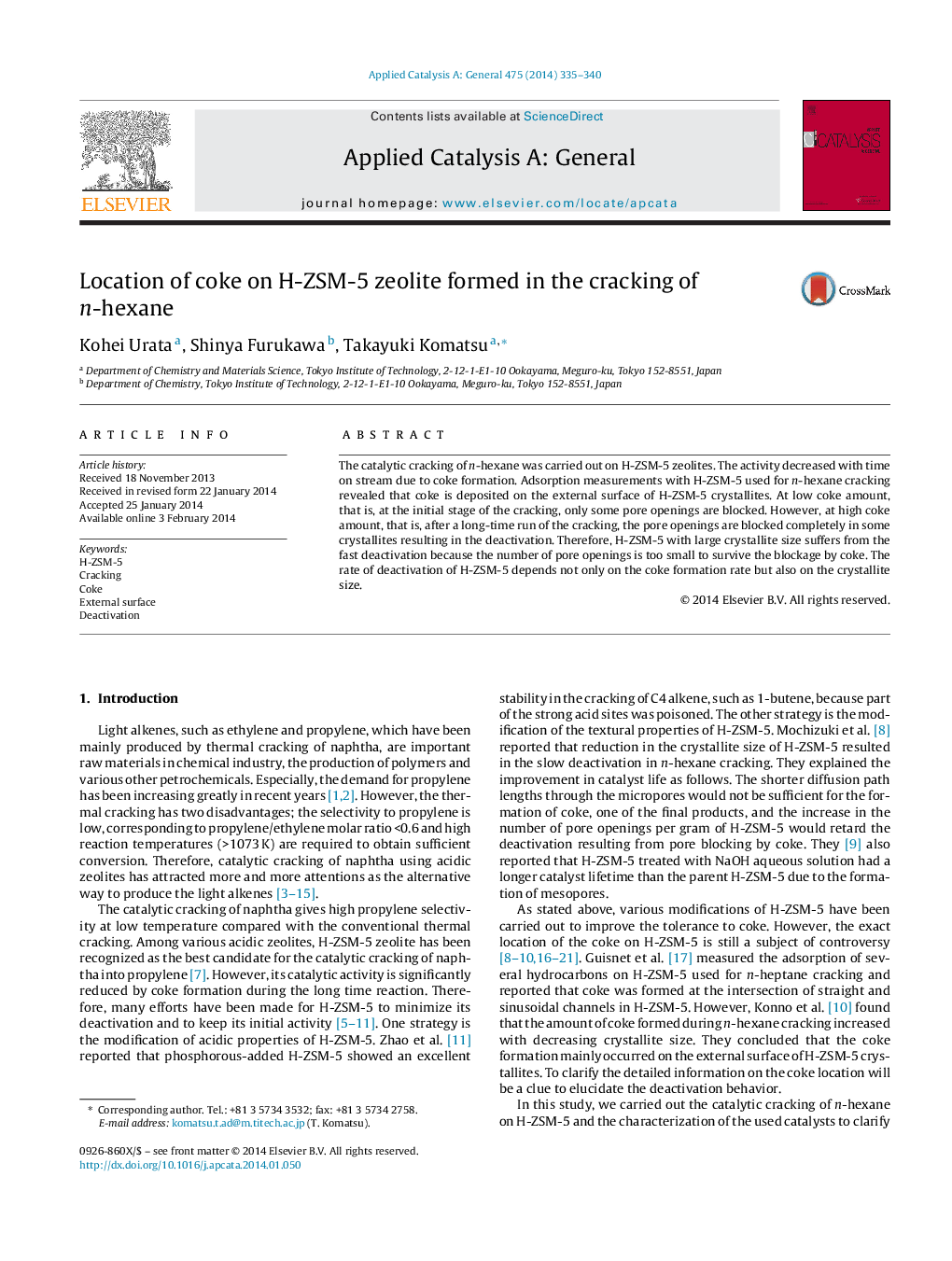| Article ID | Journal | Published Year | Pages | File Type |
|---|---|---|---|---|
| 39850 | Applied Catalysis A: General | 2014 | 6 Pages |
•Coke is deposited on the external surface of H-ZSM-5 crystallites.•Coke acts as a lid over the micropore openings.•H-ZSM-5 with a small number of micropore openings suffers from the fast deactivation.
sThe catalytic cracking of n-hexane was carried out on H-ZSM-5 zeolites. The activity decreased with time on stream due to coke formation. Adsorption measurements with H-ZSM-5 used for n-hexane cracking revealed that coke is deposited on the external surface of H-ZSM-5 crystallites. At low coke amount, that is, at the initial stage of the cracking, only some pore openings are blocked. However, at high coke amount, that is, after a long-time run of the cracking, the pore openings are blocked completely in some crystallites resulting in the deactivation. Therefore, H-ZSM-5 with large crystallite size suffers from the fast deactivation because the number of pore openings is too small to survive the blockage by coke. The rate of deactivation of H-ZSM-5 depends not only on the coke formation rate but also on the crystallite size.
Graphical abstractFigure optionsDownload full-size imageDownload high-quality image (121 K)Download as PowerPoint slide
